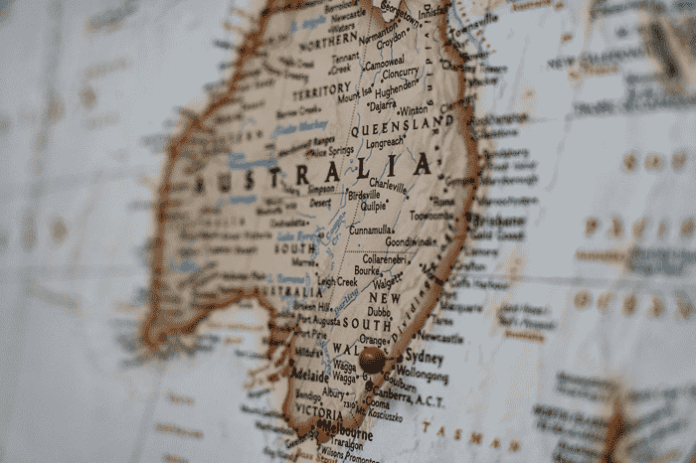It marks a day to gather with family and friends to enjoy barbecues while flying the Australian flag. But for many Australians, it also serves as an occasion to remember colonization’s first steps as well as their devastating effect on Aboriginal lives, cultures, and languages.
Exploring the Richness of Aboriginal Culture and History
Aboriginals were Australia’s original inhabitants with distinct cultures, languages, beliefs, and traditions of their own. Occupying Australia for millennia has allowed them to form complex societies which span over centuries of occupation by land and sea crossings from Southeast Asia. Studies suggest they migrated across from Southeast Asia into Australia via land crossings.
Although Indigenous Australians differ significantly, they share many interests that unite them, including environmental sustainability, community spirit, and deep spiritual ties with their land. Its celebrations typically include Aboriginal groups performing Welcome to Country ceremonies accompanied by smoking ceremonies, music, and dance performances.
Each year, the Indigenous Land Council of Australia (ILCA) encourages local communities and businesses to recognize and celebrate the Indigenous ancestry of any land being used for the events by standing up, speaking out, and celebrating – providing an excellent opportunity for teaching students about Aboriginal culture and its rich legacy.
ILCA encourages schools to host a community event and have their students reflect upon what makes their culture proud, as well as what makes them Australian. Their educational resources can provide additional assistance.
Aboriginal and Torres Strait Islander peoples have long struggled for their rights and defended their lands, so take this opportunity to discuss how the fight for indigenous rights has progressed over time.
Since the late 20th century, some original Australians have raised questions over whether or not Australia Day should be seen as a day for celebration or commemoration. This debate has intensified recently due to a new generation of native leaders demanding that this national day take a more balanced approach.
On the Australian $50 note there is a dignified man staring intently into the distance – William Ferguson was an influential native rights activist who established the Aboriginal Progressive Association and participated in organizing the 1938 protest known as National Day of Mourning.
Australia Day’s celebration date has long been the subject of debate, starting back as early as 1888 when Henry Parkes, the Premier of NSW, was asked whether any plans had been made for Indigenous Australians on Australia Day and responded promptly: “And remind them how much money we robbed them?”
Parkes’ comment was an honest and accurate depiction of how Aboriginal people view Australia Day celebrations on 26 January – in sharp contrast with how many politicians today treat this date, with many choosing not to acknowledge or recognize its significance.
Changers of Australia Day contend it would be unfair for a public holiday celebrating European invasion on a day that many Indigenous Australians recognize as one of mourning and loss. They do not oppose celebrating all that’s great about Australia; rather, they would rather have it fall during summer on an unrelated date that does not mark grief and sadness.
Both conservative and current Labor governments have rejected calls to move celebrations away from 26 January; although under Labor, local councils and public service employees must still hold celebrations on that day. Many individuals have taken it upon themselves to move their celebrations elsewhere.

Educational Resources for Understanding Aboriginal Culture
Many organizations provide valuable educational resources that enable students and teachers to better understand Aboriginal culture. These materials, via Australians Together, can be used on Australia Day to educate about recognizing Aboriginal history and culture. Not only that but they can be used while simultaneously building empathy and respect for Aboriginal experiences in Australian society.
Reconciliation Australia was established in 2001 as an organization to foster respectful relationships between Indigenous and non-Indigenous Australians for their mutual benefit, creating and strengthening trust between both groups. Their website includes resources that address racism, rights, and reconciliation while their education resource Cool Australia contains 52 lessons designed for Foundation to Year 9 level lessons to address racism, privilege, truth-telling, and cultural pride.
Indigenous Voices — This online resource features audio and video interviews of Australian Aboriginal and Torres Strait Islander people to support learning in schools and communities nationwide. It also offers teaching/learning activities suitable for diverse ages that make the resource invaluable.
Educators can utilize this resource to explore issues vital to Aboriginal wellbeing, such as identity, housing and economics. It provides educators with an excellent tool for building student knowledge, empathy, and respect of various Aboriginal experiences in Australia.
The National Library of Australia provides educators with a number of useful resources on Aboriginal and Torres Strait Islander culture. Their education resource guides aim to show teachers how incorporating the cross curriculum priority of Aboriginal and Torres Strait Islander histories and cultures can enhance learning areas from Foundation (prep) year 1 up until Year 10 within the Australian Curriculum.
ABC Education iView platform also offers valuable educational resources, featuring many Australian documentaries aimed at the classroom curriculum, such as ‘Back to Nature’, ‘In My Blood It Runs’, and ‘The Australian Dream’ – each episode being accompanied by a teacher resource which highlights key educational considerations.
The National Museum of Australia provides another wealth of resources for Indigenous studies online. Their resource guide for teachers details how to utilize exhibits and curated collections at the museum in a classroom setting – this resource comes in both pdf and interactive form for your convenience.
If you are a teacher – in order to commemorate Australia Day correctly, avoid eating shrimps on barbeques and wearing thongs – both are decidedly un-Australian! Instead, indulge in an entire jar of Vegemite by spoon-eating. At 7 pm, sit back for an intimate screening of Muriel’s Wedding before gathering with your friends to compete to see who can throw their thong farthest!
Your students should learn about Australian history and culture through these engaging activities. As an example, challenge them to consider how it must have felt to have been part of the First Fleet; once their thoughts have been shared in class.
Take advantage of January 26 to encourage your students to learn about Aboriginal culture and heritage. There are numerous websites with valuable information on this topic, or have students make a list of things they admire about Australia for display in class.

